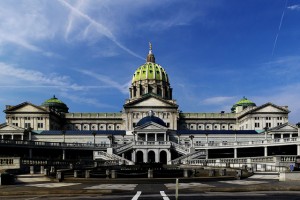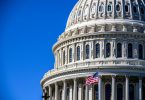By Michael Carroll | From Watchdog.org
A bill to reform Pennsylvania’s state pension system will give state workers better retirement security, reduce the state’s financial risks and put the brakes on ballooning property tax bills, supporters say.
Senate Bill 1 passed the Senate Finance Committee last week and is now in Appropriations. It would allow new state employees to choose either a full-scale 401(k)-style plan or a hybrid plan featuring a 401(k) that’s paired with a smaller defined-benefit component. Current employees could also switch to the 401(k)-style plan as well.
But the bill authored by Sen. Jake Corman, R-Centre, isn’t a done deal, since the legislature has to devote time to tackle budget issues later this month. Many public-sector labor unions also oppose defined-contribution plans, as do many Democrats in the legislature.
Jennifer Kocher, Corman’s spokeswoman, said the senator sees a pressing need to fix the current system, under which taxpayers bear 100 percent of the financial risks during market downturns.
“And for employees, it’s not the best system for mobility and managing your own retirement,” Kocher told Watchdog.org.
The bill should see movement in the legislature during the first part of June, she said, adding that the senator has been talking to the four caucuses and the governor’s office about the bill. It currently has 24 co-sponsors, all of them Republicans, according to a tally on the Pennsylvania legislature’s website.
“All of the co-sponsors are Republican, but we’ve had indications that we may get some Democrat support, particularly in the House,” Kocher said.
Among the supporters of the bill is the Harrisburg-based Commonwealth Foundation, which this week released a study that concluded the current pension system is failing to retain teachers.
Only 36 percent of the current teachers in Pennsylvania will remain in their profession long enough to become vested in their pension system, the study said. That means 64 percent of current teachers will forfeit pension contributions made toward their retirement by the state.
Only about one-quarter of the teachers will remain in the system for 25 years or more, according to the Commonwealth Foundation study.
On the other hand, SB1’s provision for a defined-contribution option would give workers who leave the system portability in terms of retirement investments, providing greater security to today’s more mobile workforce, said Elizabeth Stelle, director of policy analysis for the foundation.
“They came very close to passing something like this in October of 2016,” Stelle said. The leadership in both the House and Senate has made pension reform a high priority, and many lawmakers would like to see a pension reform bill passed before they start work on the state budget, she said.
“It has a really good chance,” Stelle said, noting that Gov. Tom Wolf seems open to signing it. “It definitely has momentum.”
The measure has its opponents, too.
“It’s another dimension to the rise of inequality,” Stephen Herzenberg, an economist and executive director of the Keystone Center, told Watchdog.org.
The switch to 401(k)-style retirement plans reflects a transfer of wealth from Main Street to Wall Street, Herzenberg said, adding that traditional government pension plans can operate at low costs and provide high returns over the long term.
Some pension system observers express confidence that reforms enacted seven years ago have helped put the system on a path to solvency.
Herzenberg said that rather than pursue defined-contribution pension reforms, Pennsylvania should stay the course and allow previously passed legislation to fully take effect and strengthen the system.
“Pennsylvania, like Illinois, has had a bad track record in terms of funding its pensions,” he said, but now the state is back on course toward full funding. When states “bite the bullet” and fully fund their pension systems during market downturns, they don’t generate unfunded liabilities, Herzenberg said.
Stelle, however, sees Pennsylvania’s unfunded pension liabilities as problematic, despite funding changes enacted in 2010. In 2006, the pension liabilities in Pennsylvania stood at $7.6 billion, but last year they had increased to $76.5 billion.
“So that reform did not do what it was intended to do,” Stelle said. “It kicked the can down the road.”
A recent study by the Hoover Institution in California concluded that Pennsylvania’s pension system funding ratio was the sixth lowest in the nation, based on a market value calculation.
And Stelle pointed to figures showing that the overall pension costs in Pennsylvania were helping to drive up property taxes. School district revenues in the state rose by $3.9 billion from 2009 through 2015, but nearly half of those funds went to the pensions.
“The root of that [property tax] problem is the pension crisis,” Stelle said.
Herzenberg, however, sees the current system continuing to provide robust returns. The teachers’ pension system has been averaging a return rate of about 9 percent annually for decades, he said. The shift to defined contributions is ideologically driven and serves to benefit the financial services industry, according to Herzenberg.
But the Commonwealth Foundation is standing by SB1 as a significant reform and a step that would allow the state to better cope with pension problems.
“Unless action is taken, we risk being unable to keep the promises made to public workers,” Nathan Benefield, the foundation’s vice president, said in a prepared statement. “We owe it to workers and taxpayers to set Pennsylvania back on a sustainable course.”









